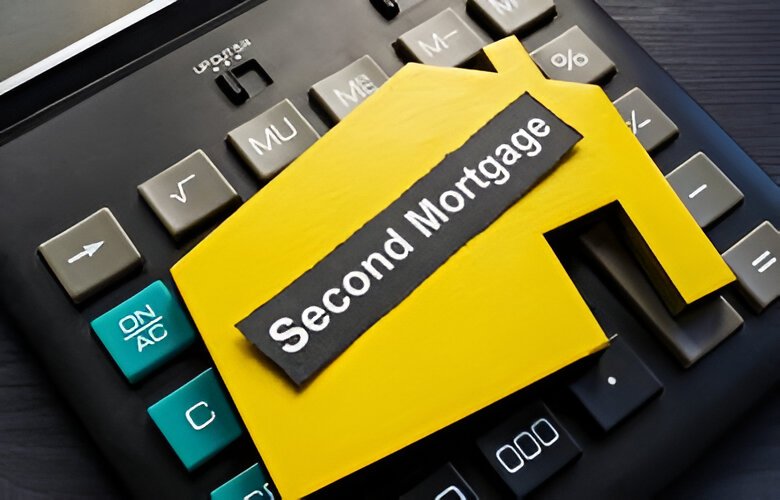Purchasing a home can be difficult for a variety of reasons, particularly in terms of financing. House prices have skyrocketed in the last decade, but salaries have remained stagnant. That, paired with the fact that the gig economy now accounts for 15% of all employment in Canada (up from 12 percent in 1988) has made qualifying for a mortgage increasingly difficult.
In light of this, it’s understandable that Canadians are looking for new ways to finance their homes. Millennials, in particular, are more likely to buy with a partner or friend, to use gift money from relatives, and to use rental income to help pay for their mortgage. Or in this case, get a shared equity mortgage.
What is a Shared Equity Mortgage?
A shared equity mortgage is one in which you take out a lesser loan in exchange for your lender owning some of the home’s equity. You and your bank lender will become co-owners of the property. You’ll be able to live in the house, but only for a portion of the cost. When you sell the house, you and the lender will split the profits and losses based on your equity portion.
A shared equity mortgage is different from a joint mortgage, which involves two or more people owning and living in the same home. Joint mortgages have advantages and disadvantages, so it is wise to only opt for it after doing your research.
Why to Use a Shared Equity Mortgage?
Shared equity mortgages have two advantages, both of which are targeted toward affordability. To begin with, a shared equity mortgage will be less expensive than a regular mortgage. You only have to mortgage the remaining piece of the house because the lender is purchasing a portion of it. Because your maximum limit is determined by the amount of mortgage you can afford, you may be able to buy a home with a higher purchase price.
Second, because you only have to repay the amount you borrowed, your monthly payments should be reduced. You can also choose to speed up your payments and pay off your mortgage sooner. Because mortgage affordability is determined by a percentage of your income, a smaller mortgage with lower payments makes it easier to qualify.
Pros and Cons of a Shared Equity Mortgage
There are a few advantages and disadvantages to consider before opting for a shared equity financing.
Pros
- They boost your purchasing power. Homebuyers who use a shared equity mortgage can afford to buy a more expensive home without increasing their monthly payments. This is especially important for lower-income purchasers who may be unable to save a large enough down payment or who are unable to afford homeownership.
- They might be able to get better interest rates. Borrowers who make greater down payments on their home loans may qualify for prime interest rates. This can be made easier with a shared equity loan that acts as a quiet second mortgage.
- They allow borrowers to get rid of PMI. Private mortgage insurance (PMI) is a monthly premium that borrowers must pay if their down payment is less than 20%. This is sometimes owing to a lower down payment or purchasing a home for more than its market value. You have a better chance of avoiding this cost by increasing your down payment amount with a shared equity loan, saving you hundreds (if not thousands) of dollars per year.
- They lower the probability of a negative outcome. Your shared equity loan may be a better deal if home prices fall in a bad real estate market and your home loses value. In this situation, your lender would share in the loss, and you’d owe them less money than you thought.
- They could be able to lower your monthly mortgage payment. Monthly payments are not required for shared equity loans. Borrowers can reduce their overall mortgage loan amount and decrease their monthly payments by using these money to make a greater down payment.
Cons
- They may impede your ability to accumulate income. You limit your total financial advantages from the property by sharing the growth with an outside investor/lender. If you can’t make up for the loss with savings or outside investments, it could hurt your capacity to accumulate wealth.
- They could be more expensive than a traditional loan. You must do your homework before deciding on a shared equity mortgage for your next home purchase. Lower down payments may mean higher interest rates, PMI, and other fees, but depending on the future value of your home, a shared equity loan may easily cost you tens of thousands of dollars when you sell or transfer the property. Which option is the better value? You should think about this before taking on a new project.
- They impose restrictions on your eligibility. Cities and municipal governments, or the private sector, offer the best shared equity lending programs. They’re usually only available to residents of specific areas who satisfy particular income restrictions, so if you’re buying in a specific area or make too much money, you might be out of luck.
- They don’t have a lot of options. As there are very few organizations that specialize in shared equity mortgages, it can be difficult to tell whether you’re receiving a good deal. Because you can’t compare numerous possibilities, you’re often forced to “take it or leave it,” making it difficult to know if it’s truly the best decision.
- They can be highly pricey in a good housing market. A shared equity mortgage loan may end up costing you far more than you planned if home prices climb dramatically (as they have in recent years). While you’ll still benefit from some of the improved value, a significant portion will go to your lender, decreasing your takeout.
Things to Consider Before Getting a Shared Equity Mortgage in Canada
There is currently only one shared equity lender accessible in the Canadian market, outside of private arrangements (typically amongst family members): the first-time homebuyer incentive. First-time homebuyers can use this program to get an interest-free shared equity loan for up to 10% of the purchase price of a new house (or 5% of the price of a resale home) to help with their down payment. The loan must be returned when the house is sold or after 25 years.
However, there are some rigorous requirements for participation in the program. The borrower must put down at least 5% and have a household income of no more than $120,000. The buyer can only buy a home for four times their salary.
There’s also the fact that because it’s a shared equity loan, the government owns a 5% share of your home. You must repay 5% of the amount you sold the house for when you sell it, even if it is much more than the amount you borrowed in the first place.
Should You Get a Shared Equity Mortgage?
The first-time homebuyer incentive in its current form is problematic. The problem with the incentive is that it restricts first-time homebuyer affordability. With a $100,000 family income and a 5% down payment, a couple in Canada can qualify for a mortgage on a home valued $479,888. However, they are limited to a purchase price of $400,000 under the program.
Your ability to increase your net worth is also harmed by the program. You only gain from the portion of your home that you own when its value rises. As a result, a share of that growth will eventually be returned to the government. Of course, if the value of your home decreases, you’ll have some protection.
If you plan to spend less than 4 times your annual income on a home and are willing to give up some of your potential equity growth, the program may be right for you. However, if you want to spend more on your home, can comfortably afford to buy one without participating in the program, or simply don’t want an extra loan hanging over your head, you should pass.
Other Options
There are a few other programs available to help first-time homebuyers afford their first house. The RRSP Home Buyers’ Plan, for example, allows you to use your RRSP to save for a first home. There’s also the home buyer’s tax credit, which provides a nonrefundable $750 tax credit in the year you purchase your first house. Land transfer tax refunds are also available in several provinces and cities for first-time homebuyers.
Your best choice outside of government programs is to make good use of your time and money. The best strategy to increase your down payment is to save more money over a longer period of time. Reduce your debt as much as possible to improve your chances of getting a larger mortgage. Increasing your income (which is easier said than done) can also help.
While Canadian mortgage rates are currently near all-time lows, getting a better rate will not help you qualify for a larger loan. This is because affordability is computed using a far higher benchmark rate than you’ll actually pay. Of course, shopping around for the best mortgage rates can save you lots of money!
The Bottom Line
Consult a mortgage broker to begin the process of purchasing your first house. They can help you figure out how much you can spend and what measures you need to take to get the house you desire. They can also advise you on whether or not you should take advantage of the first-time homebuyer incentive. When you’re ready, a broker can help you negotiate a mortgage.








